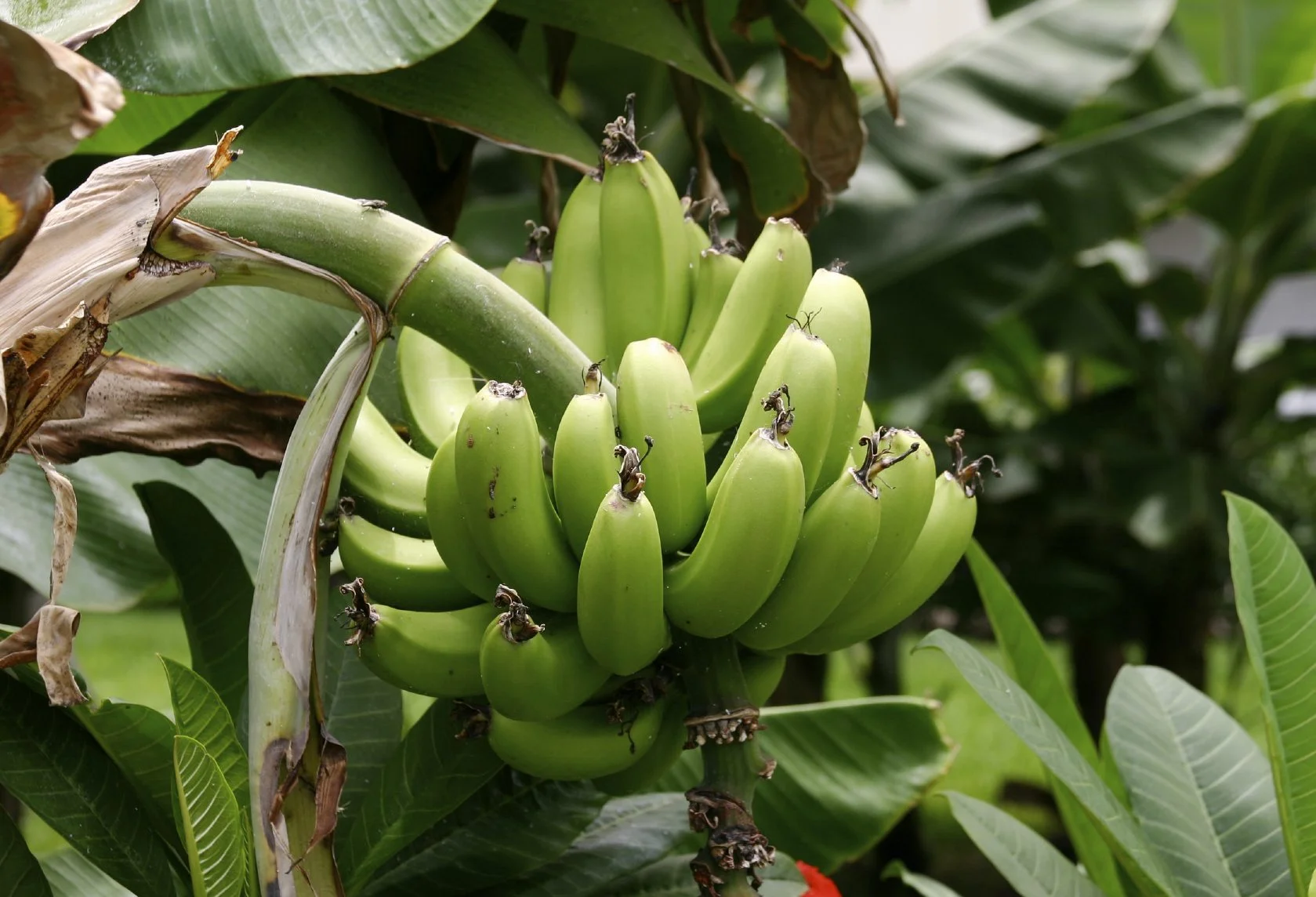Plantain Fruit Facts,FAQs, Behaviour, Habitat, Conservation and more

Plantain Fruit Facts | Description | Distribution and Habitat | Botany and evolution | Cultivation | Uses | Cultural | Interesting facts | frequently asked questions about Plantain Fruit
Plantain, a close cousin of the banana, is a highly nutritious fruit that is packed with vitamins, minerals, and fiber. This versatile fruit can be eaten ripe or unripe, cooked or raw, and is a staple food in many countries across the world. In this article, we will explore the taxonomy, morphology, and distribution of this delightful fruit.
Taxonomy of Plantain Fruit
| Kingdom | Clade | Order | Family | Genus | Species | Subspecies | Variety |
|---|---|---|---|---|---|---|---|
| Plantae | Angiosperms | Zingiberales | Musaceae | Musa | M. acuminata | M. acuminata × balbisiana | Plantain group |
Morphology of Plantain Fruit
| Characteristic | Description |
|---|---|
| Shape | Elongated, cylindrical or slightly curved |
| Length | Up to 30 cm |
| Color | Green when unripe, yellow or black when ripe |
| Skin | Thick and tough |
| Flesh | Starchy and less sweet than a banana |
| Seeds | Small and numerous, located in the center of the fruit |
| Nutritional value | High in vitamins A and C, potassium, and fiber. Lower in sugar than bananas, and contains no fat or cholesterol. |

Description of Plantain Fruit
Plantains are a staple food in many countries, particularly in West and Central Africa, where they are often boiled, roasted, or fried. They are also used in a variety of dishes, including stews, soups, and desserts. The fruit is rich in vitamins A and C, as well as potassium and fiber. Ripe plantains can be eaten raw, but are often cooked to make them more palatable. Plantains are also used in traditional medicine, and are believed to have a range of health benefits.
Distribution and habitat of Plantain Fruit
The plantain is native to Southeast Asia, but has been introduced to many tropical regions around the world. It is a hardy plant that thrives in warm, humid conditions, and can grow in a variety of soil types. Plantains are grown commercially in many countries, including Colombia, Ecuador, Cameroon, Ghana, and Nigeria. They are also grown on a smaller scale in other parts of the world, including the Caribbean, Central America, and parts of the United States.
Botany and evolution of Plantain Fruit
The plantain fruit belongs to the genus Musa of the family Musaceae. It is a close relative of the banana and shares many similarities with it. The plantain is believed to have originated in Southeast Asia, but it has been cultivated and naturalized in many tropical regions of the world. The plant is a perennial herb that grows from an underground rhizome. It produces a pseudostem that can reach up to 8 meters in height and is composed of leaf sheaths that wrap around one another. The plantain fruit develops from the female flowers that are produced on the inflorescence. The fruit is a parthenocarpic berry, meaning that it does not require fertilization to develop.
Cultivation of Plantain Fruit
Plantains are typically propagated through suckers or tissue culture, and are grown in tropical regions with abundant rainfall and high humidity. They prefer well-drained soils that are rich in organic matter, and require regular fertilization to produce high yields. Plantains are often grown as part of mixed cropping systems, alongside other crops such as cassava, yams, or maize. They are relatively easy to grow and are an important source of food and income for many small-scale farmers.
Uses of Plantain Fruit
The fruit of the plantain is a versatile ingredient that is used in a variety of dishes, both sweet and savory. In some countries, ripe plantains are boiled, mashed, and used as a base for desserts or fritters. In other countries, unripe plantains are used to make savory dishes such as stews, soups, or fried snacks. Plantains are also used in traditional medicine to treat a variety of ailments, including diarrhea, dysentery, and hypertension.
Cultural and Historical Significance of Plantain Fruit
Plantains have played an important role in the diets of many cultures for thousands of years. They were likely domesticated in Southeast Asia over 6,000 years ago, and have since spread to many other parts of the world. In Africa, plantains are a staple food that are used in a wide range of dishes. They are often associated with celebrations and festivals, and are an important part of many cultural traditions.
Explanatory Notes for Plantain Fruit
The plantain fruit is sometimes confused with the banana, but there are some important differences between the two. Plantains are typically larger and less sweet than bananas, and are often cooked before being eaten. Plantains are also a good source of dietary fiber, and are lower in sugar than bananas. While bananas are usually eaten raw, plantains are more commonly used in cooking and are a staple food in many countries.
Interesting facts about Plantain Fruit
- The plantain fruit is a member of the banana family and is a staple food in many tropical regions of the world.
- Unlike bananas, which are usually eaten raw, plantains are most commonly cooked before being eaten.
- Plantains are a good source of dietary fiber and are lower in sugar than bananas.
- Plantains are typically larger and less sweet than bananas, with a starchier texture.
- Plantains are often used in traditional medicine to treat a variety of ailments, including diarrhea, dysentery, and hypertension.
- Plantains are a versatile ingredient and are used in a variety of sweet and savory dishes.
- Plantains are relatively easy to grow and are an important source of food and income for many small-scale farmers.
- There are many different varieties of plantains, each with their own unique characteristics.
- Plantains are rich in vitamins A and C, as well as potassium and fiber.
- Plantains have been cultivated for thousands of years and are an important part of many cultural traditions.
General queries or frequently asked questions about Plantain Fruit
1. What is the difference between a plantain and a banana?
Plantains are typically larger and less sweet than bananas, with a starchier texture. They are also often cooked before being eaten, whereas bananas are usually eaten raw.
2. Is the plantain fruit healthy to eat?
Yes, plantains are a good source of dietary fiber, vitamins A and C, potassium, and other nutrients. They are also lower in sugar than bananas and have a lower glycemic index.
3. How are plantains typically prepared and eaten?
Plantains can be boiled, fried, grilled, baked, or roasted, and are often used in a variety of sweet and savory dishes.
4. Can plantains be eaten raw?
While technically safe to eat raw, plantains are usually cooked before being eaten due to their starchier texture and less sweet taste.
5. Where are plantains grown?
Plantains are grown in many tropical regions of the world, including parts of Africa, Asia, Latin America, and the Caribbean.
Conclusion
In conclusion, the plantain fruit is a versatile and nutritious ingredient that is an important part of many cultural traditions. It is a staple food in many tropical regions of the world and is relatively easy to grow, making it an important source of food and income for many small-scale farmers. Plantains are rich in vitamins, minerals, and fiber, and are used in a variety of sweet and savory dishes. They are often confused with bananas, but there are some important differences between the two. Overall, the plantain is a fascinating fruit with a long history and many interesting uses.












